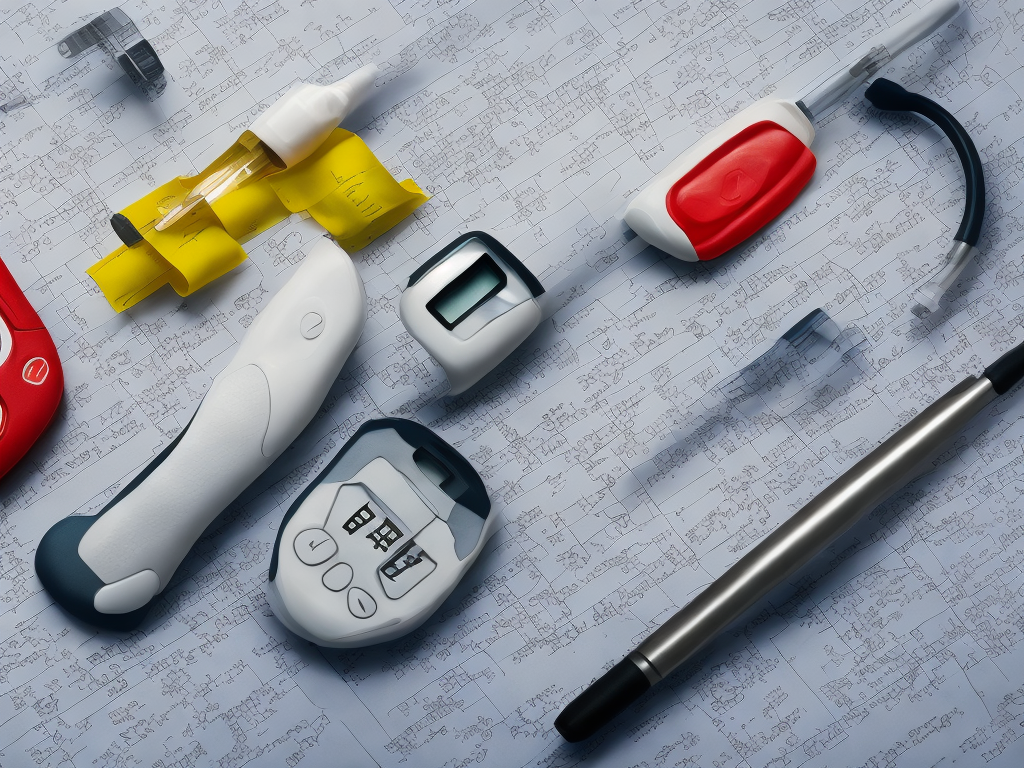
Difference Between Type 1 And 2 Diabetes
Diabetes is a chronic condition that affects millions of people around the world. It occurs when the body either cannot produce enough insulin or does not use it effectively, resulting in high levels of glucose in the blood. There are two main types of diabetes: type 1 and type 2. Although both types share similarities, they have distinctive characteristics and require different management approaches. In this article, we will explore the differences between type 1 and type 2 diabetes.
Type 1 diabetes, also known as insulin-dependent diabetes or juvenile-onset diabetes, is an autoimmune disease that typically develops during childhood or adolescence. In type 1 diabetes, the immune system mistakenly attacks and destroys the insulin-producing cells in the pancreas, known as beta cells. As a result, the body is unable to produce insulin, the hormone responsible for regulating blood sugar levels. People with type 1 diabetes require daily insulin injections or the use of an insulin pump to survive.
On the other hand, type 2 diabetes, formerly known as adult-onset diabetes, is a metabolic disorder that usually develops later in life, although it can also affect younger individuals, especially with the rise in obesity rates. In type 2 diabetes, the body either does not produce enough insulin or becomes resistant to its effects. Insulin resistance occurs when the body's cells no longer respond correctly to insulin, leading to elevated glucose levels in the blood. Unlike type 1 diabetes, type 2 diabetes can often be managed through lifestyle changes, oral medications, and sometimes insulin therapy.
One of the key differences between type 1 and type 2 diabetes is their underlying causes. Type 1 diabetes is primarily an autoimmune disease, meaning the immune system mistakenly targets and destroys the beta cells in the pancreas. The exact cause of this immune response is not yet fully understood, but it is believed to involve a combination of genetic and environmental factors. On the other hand, type 2 diabetes is heavily influenced by lifestyle factors such as unhealthy diets, sedentary lifestyles, obesity, and a family history of the disease. While genetics play a role in type 2 diabetes, it is much less pronounced compared to type 1.
Another distinguishing factor is the age at which these two types typically develop. As mentioned earlier, type 1 diabetes often appears in childhood or adolescence, although it can be diagnosed at any age. The exact triggers for type 1 diabetes in children are still not completely understood, but viral infections and certain genetic factors are thought to contribute to its development. In contrast, type 2 diabetes is typically diagnosed in adulthood, especially in individuals over the age of 40. However, due to the rise in childhood obesity, more young people are now being diagnosed with type 2 diabetes.
Furthermore, the symptoms and onset of these two types of diabetes differ. In type 1 diabetes, symptoms often develop rapidly and can include excessive thirst, frequent urination, unexplained weight loss, extreme fatigue, and blurred vision. These symptoms may progress quickly, leading to diabetic ketoacidosis—a life-threatening condition requiring immediate medical attention. In contrast, symptoms of type 2 diabetes can be more subtle and develop gradually over time. These symptoms may include increased thirst, frequent urination, persistent fatigue, blurred vision, slow healing of wounds, and frequent infections.
The treatment approaches for type 1 and type 2 diabetes also differ significantly. Type 1 diabetes is managed with the use of insulin, either through multiple daily injections or by wearing an insulin pump. The goal is to closely monitor blood sugar levels and adjust insulin doses accordingly. Additionally, individuals with type 1 diabetes are encouraged to follow a healthy diet and engage in regular physical activity to maintain blood sugar control.
For type 2 diabetes, treatment generally starts with lifestyle modifications, including adopting a healthy diet, increasing physical activity, and losing weight if necessary. These changes can sometimes be sufficient in controlling blood sugar levels. However, if lifestyle modifications are not enough, oral medications may be prescribed to help the body use insulin more effectively or to stimulate insulin production. In more severe cases, insulin therapy may also be necessary.
Lastly, it is important to note that both types of diabetes can have serious complications if left uncontrolled. Chronic high blood sugar levels can damage various organs and systems in the body, including the heart, blood vessels, kidneys, nerves, and eyes. However, with proper management and adherence to a treatment plan, individuals with diabetes can live healthy and fulfilling lives.
In conclusion, while type 1 and type 2 diabetes share some similarities, they are distinct conditions with different causes, age of onset, symptoms, and treatment approaches. Type 1 diabetes is an autoimmune disease that usually develops in childhood, necessitating lifelong insulin therapy. Type 2 diabetes, on the other hand, is often associated with lifestyle factors and can often be managed through lifestyle changes, oral medications, and sometimes insulin supplementation. Understanding these differences is essential for effective management and support for individuals living with diabetes.
 Self-Instruct
Self-Instruct